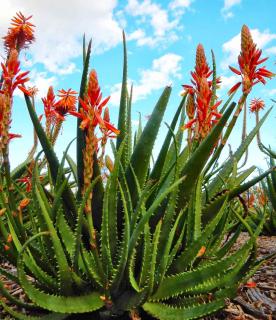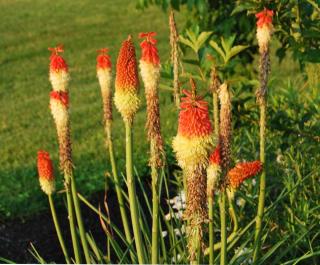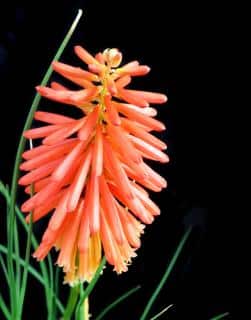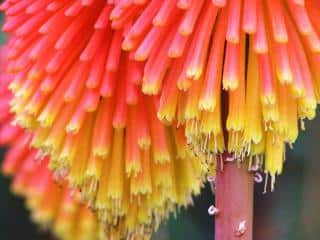

The red hot poker is a flower native to South Africa with succulent leaves.
Key facts to remember
Name – Kniphofia
Family – Liliaceae
Type – perennial
Height – 20-50 inches (50-150 cm)
Exposure: full sun – Soil: chalky – Flowering: summer, fall
The poker plant‘s bloom is unique and your guests will definitely give you a “Wow”! Caring for this plant, also known as Kniphofia (and, previously, Tritoma), is surprisingly easy.
It will quickly settle in the background portions of your garden flower beds.
Recommended is to plant red hot poker in spring and space plants at least 30 inches (40 cm) between neighboring plants.
 Properly draining soil is strongly recommended, especially for winter.
Properly draining soil is strongly recommended, especially for winter.You can mix soil from your garden together with flower plant soil mix, this will lead to better results.
A very easy plant to care for, red hot poker won’t give you any problems, especially if it’s well settled-in.
 Remove wilted flowers regularly. This is called deadheading. It helps trigger repeat blooming.
Remove wilted flowers regularly. This is called deadheading. It helps trigger repeat blooming.Even though the poker plant resists freezing pretty well (down to 8°F or -13°C), it helps to protect the foot of your poker plant with good mulch during winter if the climate in your area is cold.

Hardy enough to survive in our temperate climates, red hot poker will survive low temperatures, even below freezing. With luck, the flowers will keep coming up deep into December.
The poker itself is a flower that produces and abundance of nectar. It will contribute to attracting pollinators to your garden.
Colorful hues of red, orange and yellow definitely make this plant look like fireworks. Its tall, upright bursts of flowers will catch the eye of every casual passer-by – even from the back of the flower bed! Imagine the impact in an indoor bouquet!

Varieties of red hot poker within K. uvaria come in many different colors and sizes:
Read also:
Adding fertilizer in spring can increase the blooming.